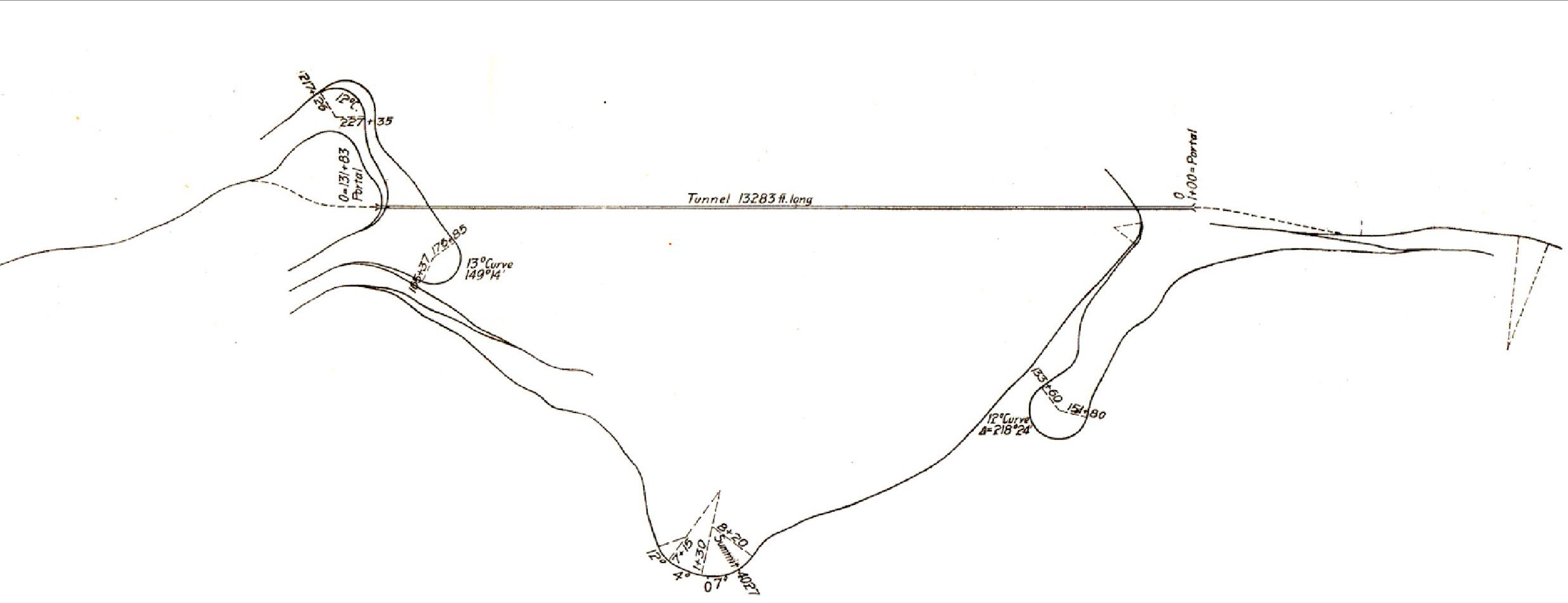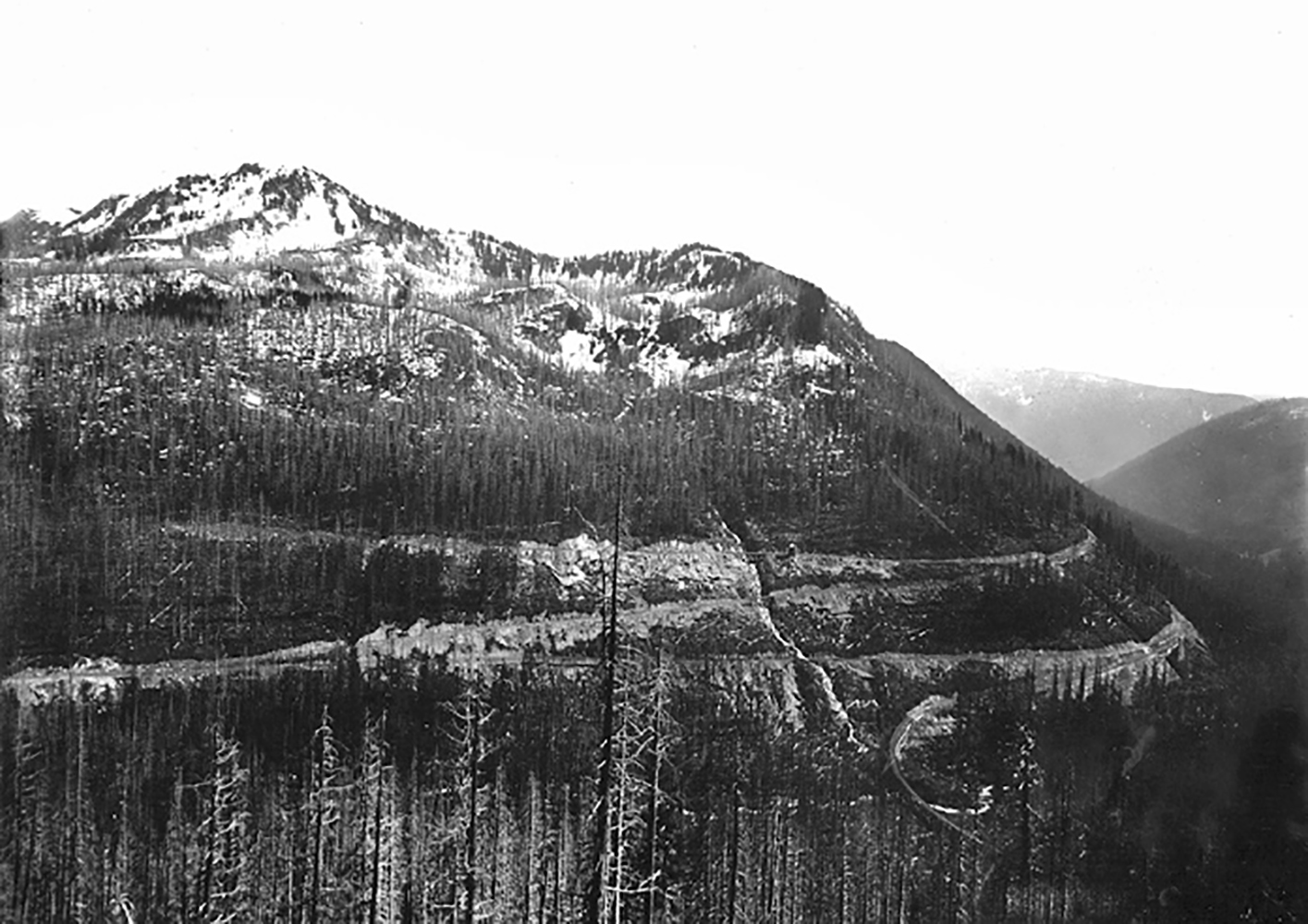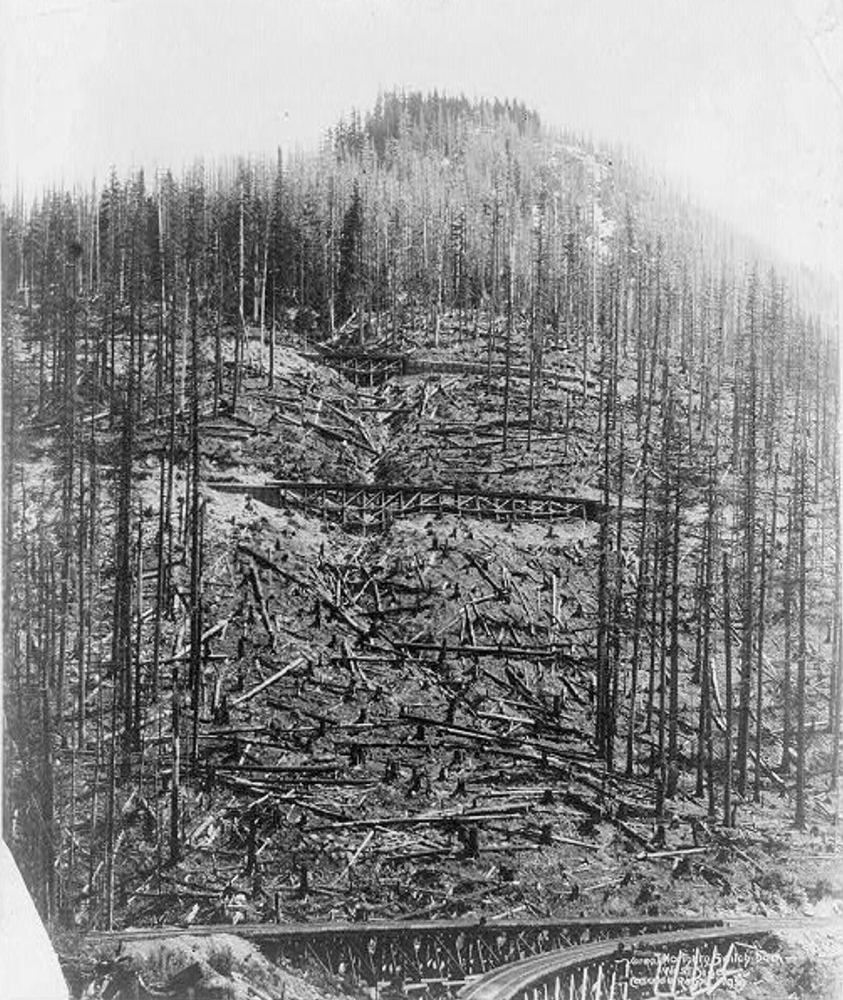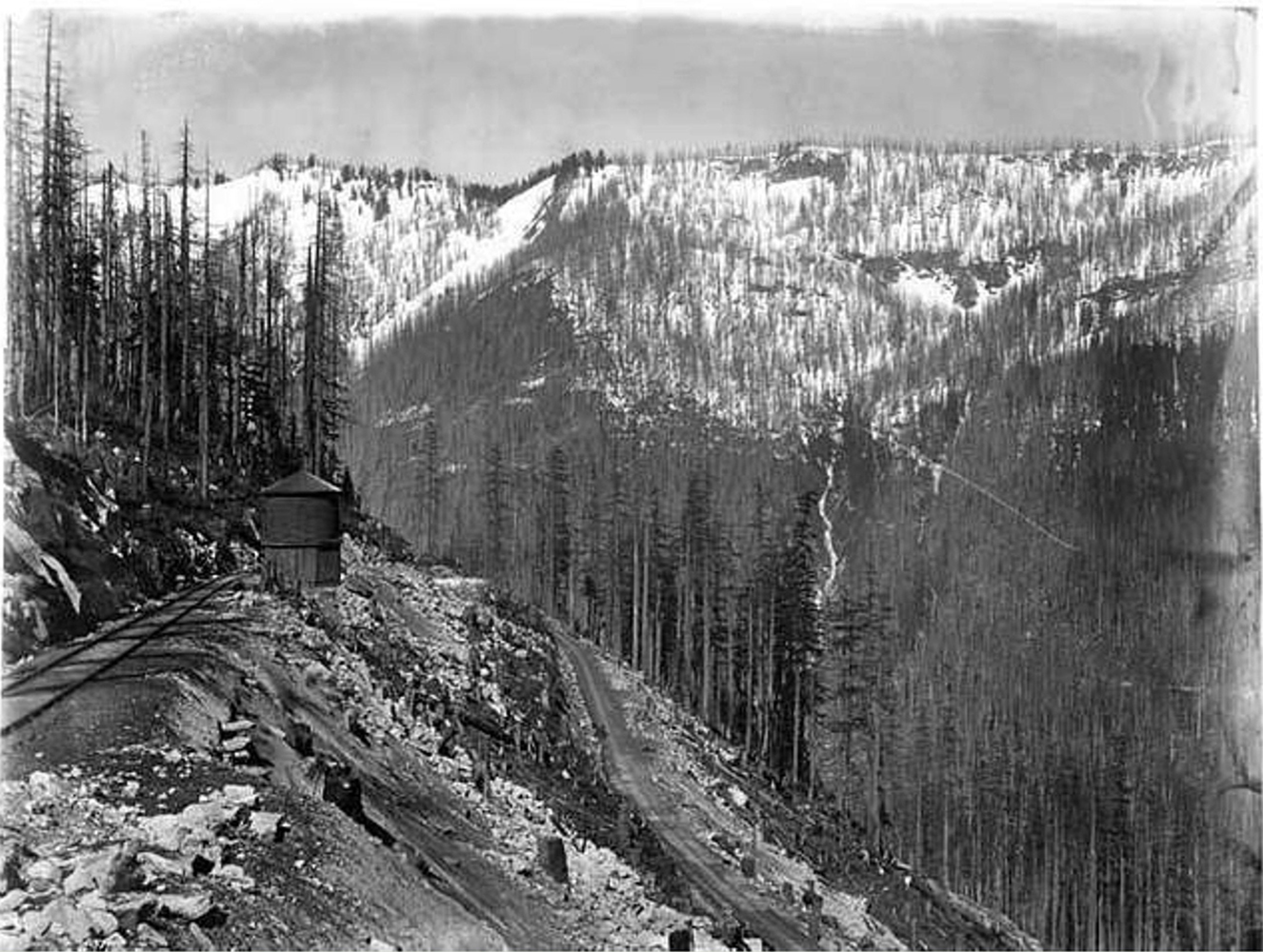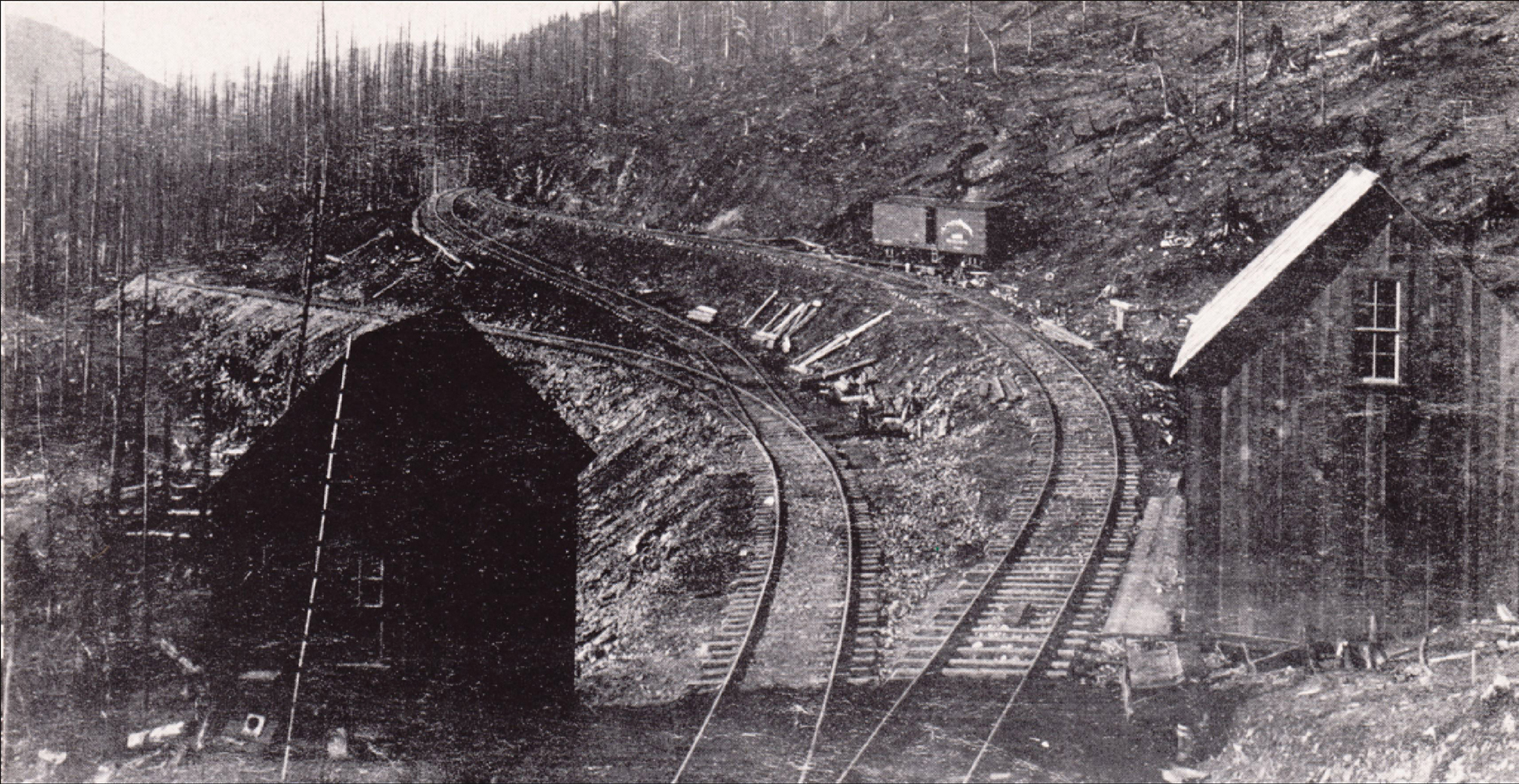mm 2467.2 Hikers may be unaware that the 2 miles of PCT just north of Stevens Pass was built in 1893 by the Great Northern Railroad as a temporary rail line.
Discovering Stevens Pass
The Northern Pacific Railroad, competitor to the GNR, searched the north cascades for a train route starting in 1867. They searched again in 1870, 1872, and 1882. They concluded there was no route better than Stampede Pass and built their route to Tacoma. James J. Hill owner of the GNR remained focused on reaching a port further north on Puget Sound from St. Paul Minnesota. In 1887 he employed a chain-smoking foul-mouthed Army engineer named Albert Bowman Rogers to seek a route. Rogers spent that summer exploring various passes and at the end of September reported that he favored Cady Pass. In 1889 another man, John Frank Stevens, was busy discovering the Marias Pass route through the Rocky Mountains (a bronze statue of him stands at Maria Pass today). The following year the GNR asked him to search for a route through the Cascades as they laid track westward through Idaho.
Instead of following a river up to one pass, then another river to the next, Stevens chose to hike directly from pass to pass, sometimes crawling over ridgelines. He did this from Cascade Pass to Snoqualmie Pass and back. This is how he discovered Stevens Pass. He was likely on a path very close to the PCT when he discovered the headwater of Stevens Creek and saw its proximity to Tye Creek. Correctly guessing how it might be reached from the east, he sent his engineer C. F. Haskell to follow Nason Creek to its headwater. Haskell found Steven's mark and confirmed the route. Haskell reported no trails, no blazes, no signs of campfire, no signs of humans at all.
Stevens immediately set to work solving the problem with this route; its steep western slope. That winter he went to Martin Creek and sketched out plans for the Martin Creek Horseshoe Tunnel. Stevens went on to engineer the Panama Canal. He settled in Snohomish and died there in 1943 at the age of 90.
The Spurs
When the first train tunnel at Stevens Pass had been surveyed and the entrances dug out, James J. Hill, owner of the Great Northern Railroad, was so eager to get trains running to Everett that he ordered the construction of an engineering marvel that I can hardly believe was built and used: the Stevens Pass spurs. To get trains the additional 1000 feet up and over Stevens Pass eight spurs (dead-end switchbacks) were built, three on the east side, and five on the west side.
The PCT route goes from spur #3 to the pass. The tip of spur #5 would be just west of the ski resort parking lots. They are numbered east to west, as the railway was built.
Trains would be divided into sections of seven cars and a locomotive attached at both ends. One locomotive would take the train to the dead-end spur, the rail switch would be flipped, then the other locomotive would pull the train the opposite direction up to the next spur, and so on.
Snow removal was a continuous effort in the winter. Two rotary snow plows were connected back-to-back and cleared the spurs by working back and fourth.
Use of this elaborate system ended 7 years later when the first train passed through the tunnel in 1900. An enormous amount of old growth forest was cut down to build this temporary route. Even the tunnel itself was a temporary solution replaced by another tunnel in use today.
The west spurs
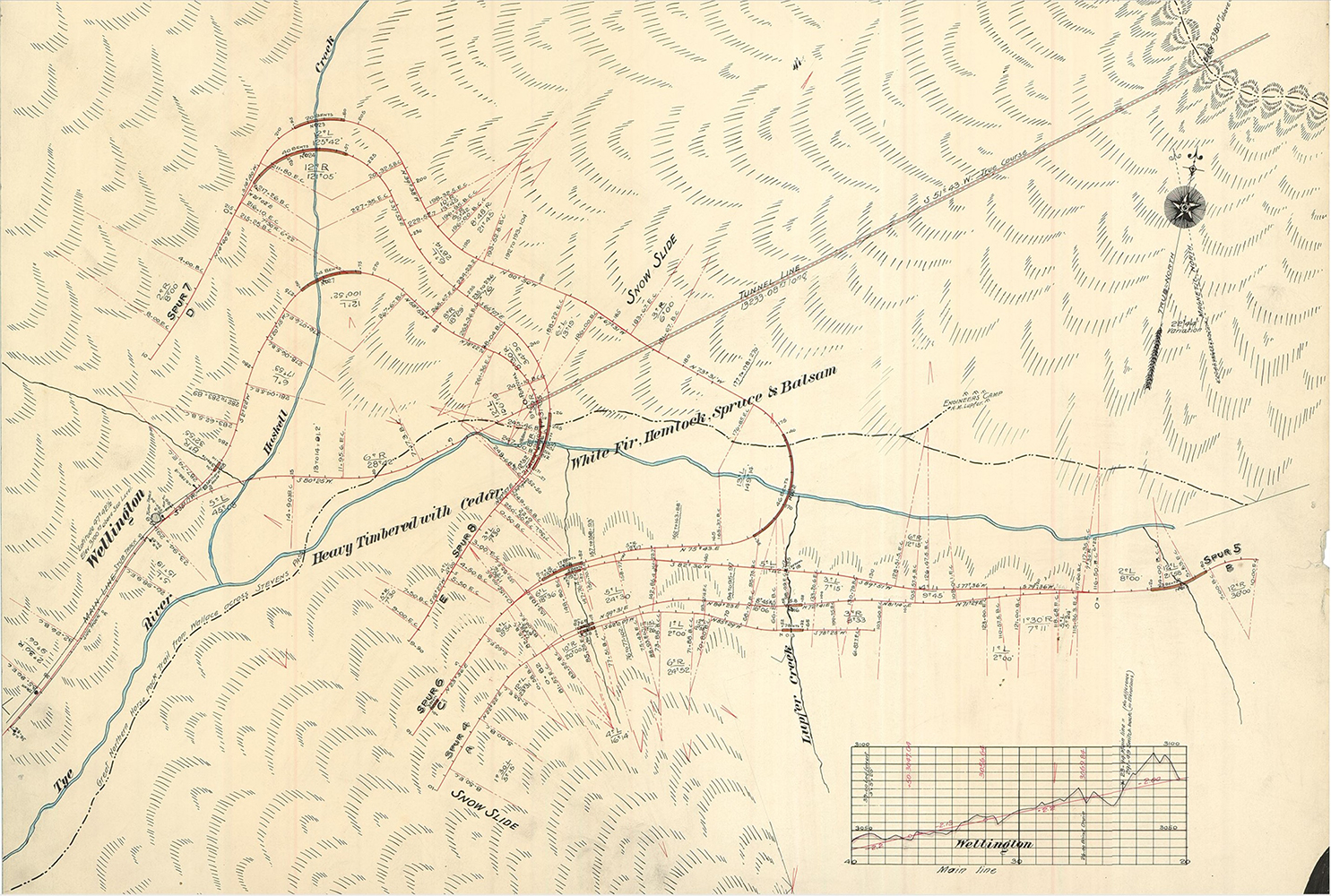
The eight spurs
